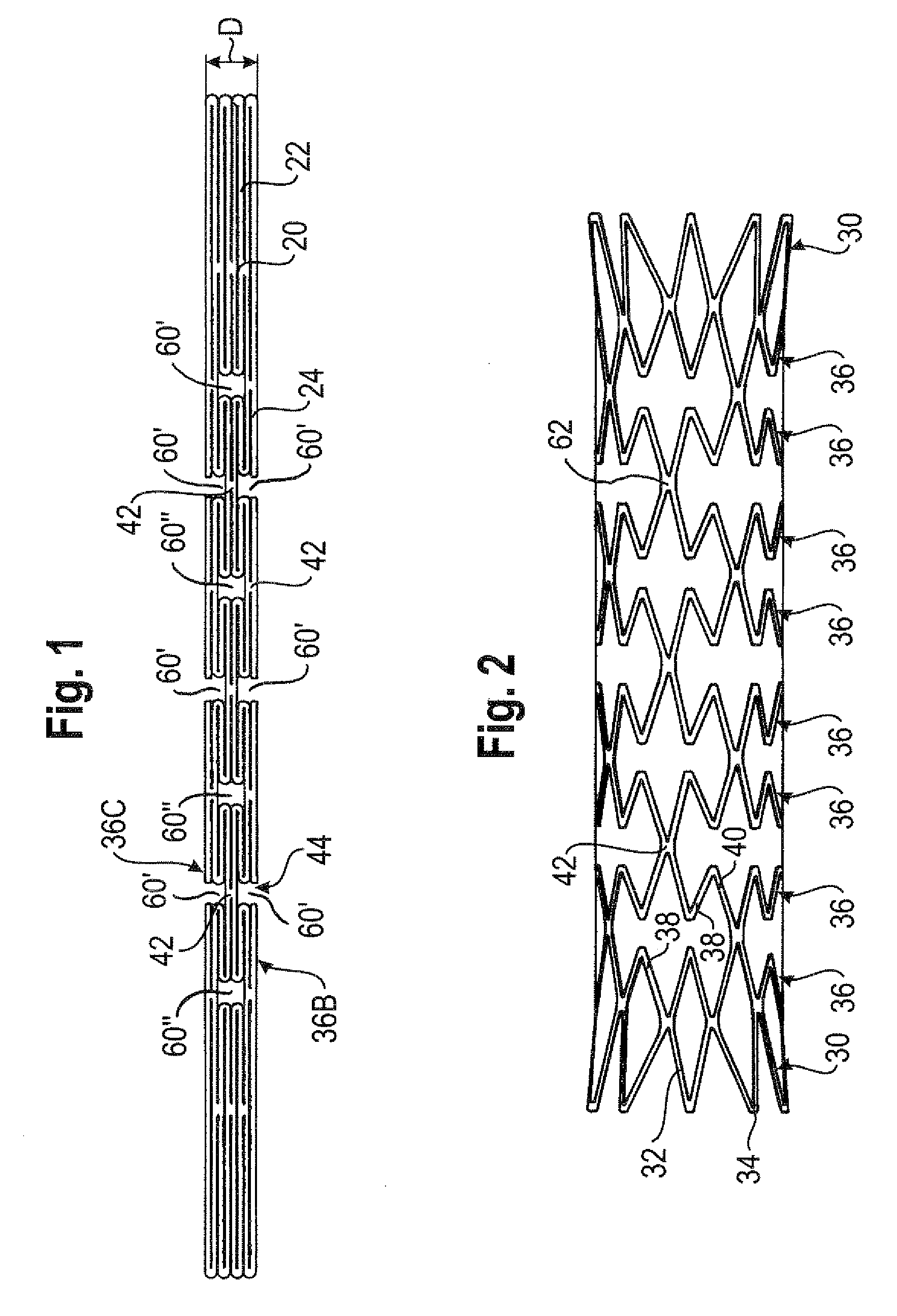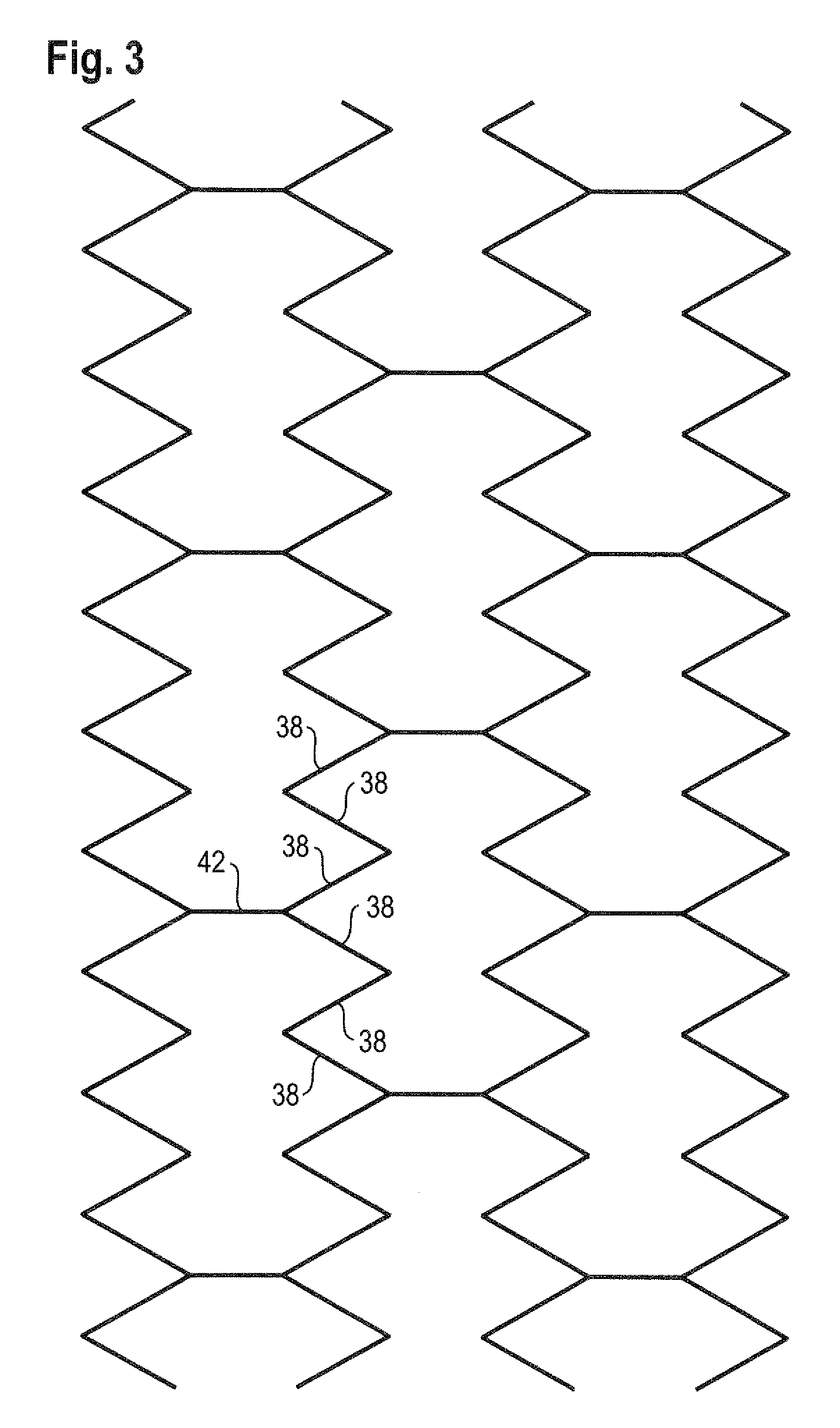Bend-capable stent prosthesis
a stent and bending technology, applied in the field of stent prosthesis, to achieve the effect of ensuring the stent is bending and bending performance, ensuring the stent is bending
- Summary
- Abstract
- Description
- Claims
- Application Information
AI Technical Summary
Benefits of technology
Problems solved by technology
Method used
Image
Examples
example
[0047]To assist readers to grasp the physical dimensions of stents that are preferred embodiments of the present invention, we set out in the Table below some representative dimensions for stents studied by the Applicant. It is to be understood that these dimensions are provided not to signify precise dimensions that work better than others but merely dimensions within the ranges here contemplated.
TABLEEach zig-zag ringConnectorStrutStrutextendedNumber ofwidthlengthConnectorlengthProductstruts (μm)(mm)(mm)length(mm)*A241601.950.81.4B361001.450.51.0C301001.450.51.0D321351.550.51.0*This is the full length that lies between the ends of two co-linear slits axially spaced from each other that create the two axially-facing V-points of inflection of two adjacent zig-zag rings
[0048]One message to be taken from the Table is that strut lengths are going to be, in general, significantly more than 1 mm while connectors are going to exhibit a length significantly below 1 mm. The points of inflec...
PUM
 Login to View More
Login to View More Abstract
Description
Claims
Application Information
 Login to View More
Login to View More - R&D
- Intellectual Property
- Life Sciences
- Materials
- Tech Scout
- Unparalleled Data Quality
- Higher Quality Content
- 60% Fewer Hallucinations
Browse by: Latest US Patents, China's latest patents, Technical Efficacy Thesaurus, Application Domain, Technology Topic, Popular Technical Reports.
© 2025 PatSnap. All rights reserved.Legal|Privacy policy|Modern Slavery Act Transparency Statement|Sitemap|About US| Contact US: help@patsnap.com



